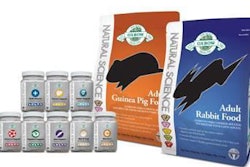Sustainability is a growing force in the world at large, and the petfood industry is not immune, according to Caitlyn Bolton, executive director of the Pet Industry Sustainability Coalition, who spoke at Petfood Forum 2014 on April 2. Bolton's presentation, "Sustainability Stories Shaping the Pet Industry," focused on defining sustainability and introducing the ways in which the petfood industry can communicate with its customers to make sustainability an understandable issue.
There are two ways to look at sustainability, according to Bolton. One viewpoint is the "moral imperative": As human beings, we have a responsibility to future generations, the planet, its wildlife and its ecosystems. The other viewpoint takes a more business-like approach, addressing risk mitigation, costly supply issues, safety and transparency issues efficiency improvements that save a company money. Both are important for understanding the importance of sustainability as a whole.
Communication is key on multiple levels and with multiple audiences. "You really have to simplify with all your audiences," said Bolton. Learning their problems and issues regarding sustainability and figuring out how to reach them and work with them is a vital strategy. Whether the audience is internal to the company, involved in the supply chain, a larger part of the industry or the end consumer, the general plan should be the same. You should try to connect with your audience, and aim to become a facilitator to help them figure out what they care about-create a shared platform around sustainability. "How can we be an enabler?" said Bolton.
Emotions can be an easy way to tell the sustainability story, and the petfood industry has a leg up, according to Bolton. "It's easy to appeal to emotions, social desires and shared value," she said. Whatever plan gets put in place, the sustainability story a company is telling must be backed up with a strategy-and they must follow through.
Communication at all levels
Communicating at the employee level is all about connecting them with the company's message. "They want to be engaged, they want to feel like their work is useful," said Bolton. In particular, "Generation Y wants to be engaged in a workforce that makes a difference." From a business standpoint, engaged employees mean 16% higher profitability, 18% higher productivity and 12% more customer loyalty.
Communicating at the retail level is essential, and ties into supply chain communication. Retailers, said Bolton, are beginning to ask questions about the sustainability of products because it's what they're hearing from their customers. Customers want more transparency in their pet products and are interested in sustainability-retailers need to know what products to sell to meet this emerging need, and they're going to want their answers from the companies providing those products.
Supply chain communication expands from the need for those answers. Companies will need to determine what parts of the supply chain are most affected by a sustainability plan, and discuss the fine points with vendors.
Solid consumer communication is the end result. "Customers are looking for a company to help enable them to be better global citizens," said Bolton. This moral viewpoint makes sustainability an attractive idea, and it's the job of the petfood industry to ensure that consumers are educated. The data backs this up: "If price and quality are equal, social purpose ranks as the most important quality in a brand," said Bolton.
Sustainability is here to stay, and its many facets will take some industry work to get a solid grip on. Collaborative petfood issues include sustainable sourcing, standard evolution metrics and packaging. But these issues are worth creating a plan for, and the right communication strategies will lead to industry success.

















